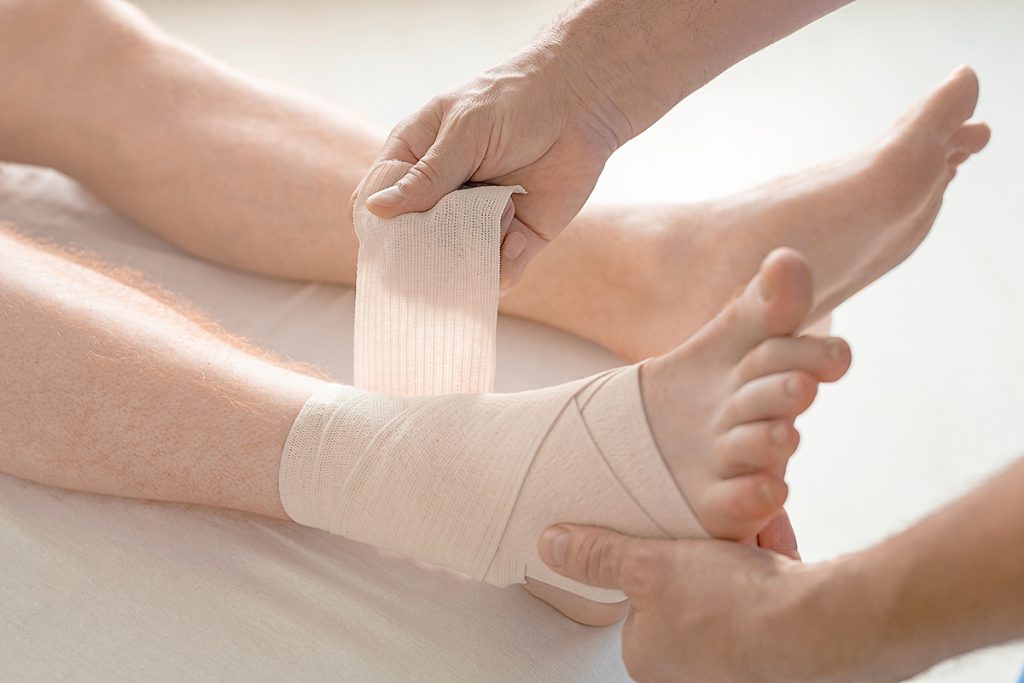Ankle Sprain and Strain Treatment
Ankle sprains and strains often will heal on their own. In four to six weeks, you will be as good as new! Of course, you have to rest while you heal. And any strenuous activity will delay your ankle sprain and strain treatment.
Sprains and strains are graded, 1 through 3. The grade signifies the level of injury and treatment required.
Grades 1 and 2
Sprains and strains in these grades are moderate to mild. They are treated with the R.I.C.E. method, such as:
REST: You should not walk or stand on the ankle until it is healed. The resting period can be a few days to up to a few weeks.
ICE: Application of ice right away helps with swelling. Ice packs are to be applied ASAP. Thereafter, apply for 20 minutes at a time. It’s ideal that you do this 3 to 4 times a day. Never apply ice directly to the skin though, and always wrap it in a cloth first.
COMPRESSION: Athletic tape and compression bandages are best. Because this will immobilize the ankle. And immobilization and compression will speed up recovery! It also protects against further injury. If your injury is severe, it’s important to get a compression wrap from your doctor.
ELEVATION: Your ankle has to be elevated above the heart level. This is best when done within 48 hours of the injury. It reduces swelling and pain.
NSAID is used for grade 1 or 2 sprains and strains. These medications work to reduce inflammation and pain. Acetaminophen (Aspirin) can also help relieve pain.
Grade 3
These sprains and strains are more severe. They require longer healing times and different treatments. Grade 3 ankle sprain and strain treatment methods include the following:
Casting: A cast or a brace is applied, and elevation is crucial. Plaster casts or air casts are popular. Most people will need crutches to aid walking.
Rehabilitation: Rehabilitation treatment may be necessary. These methods include electrical stimulation and ultrasounds. Plus, you also can perform strengthening exercises. The goal is to reduce pain and support new tissue development. Isometric strengthening is especially ideal. Promoting proprioception (body awareness) reduces the risk of re-injury. Water-based exercise is best for more severe injuries.
Surgical Options for Ankle Sprain and Strain Treatment
If all conservative treatment methods fail, surgery is the next option. Possible surgical procedures can be, as follow:
Arthroscopic – the surgeon looks inside the ankle joint. They can identify if any loose fragments are causing pain. They can also see if a tendon or ligament has become trapped.
Reconstructive – ligaments, muscles, and tendons are reconstructed. You may also get transplants from other parts of your foot and ankle.
Orthopedic surgeons are the number one specialist for ankle surgeries. However, having surgery will require additional healing time. You will also need physical therapy. Severe sprains can prevent you from returning to prior activity levels.
If you are searching for ankle strain or sprain treatment, call us at 888-409-8006. Our top ankle specialist and orthopedics are here to help!

